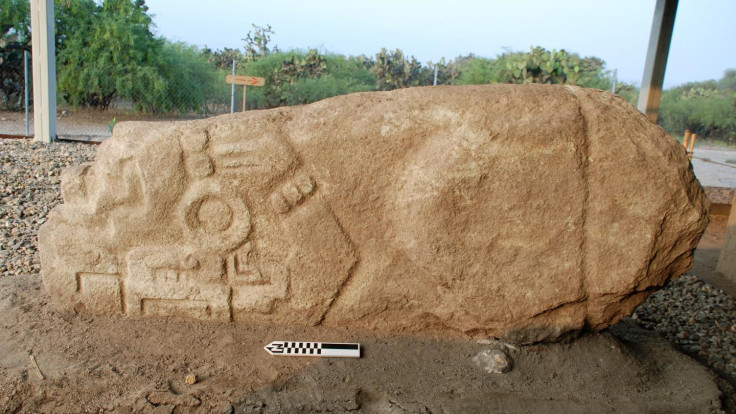Ancient crocodile stone discovered in Mexico sheds light on Zapotec civilisation
Stone found at Lambityeco, an important pre-Hispanic settlement, may have been part of a stairway to a temple.

In the 1960s, a team of excavators in Oaxaca State, Mexico, uncovered the ruins of Lambityeco, an ancient city which once formed part of the Zapotec civilisation – an indigenous Mexican culture that flourished in the Valley of Oaxaca during the pre-Hispanic period.
Recently, archaeologists from the Field Museum in Chicago returned to the site and unearthed a large "crocodile stone" revealing clues which have led researchers to revise long-held ideas about the site.
During the initial excavation in the 60s, archaeologists were confronted with seemingly conflicting evidence. On the one hand, they had unearthed a palace with beautiful frescoes bearing similarities to those at nearby Monte Albán, a much larger settlement which was the socio-political and economic centre of the Zapotec civilisation, as well as being one of the earliest cities to be founded in Mesoamerica. Findings like this suggested that Lambityeco had a close connection with Monte Albán.
However, not everything they found seemed to fit with this theory because some of the artefacts displayed significant differences with those from the larger settlement. This led the archaeologists to attribute Lambityeco to a later time period than the Monte Albán, an interpretation that was accepted for decades.
The recent analysis though, has suggested that Lambityeco was, in fact, contemporaneous with Monte Albán, leading to new questions about the site's history.
In conjunction with Mexico's National Institute of Anthropology and History, excavations led by Gary Feinman and Linda Nicholas of the Field Museum over the last four years have expanded the area of investigation at Lambityeco, uncovering in the process a richer history than was previously imagined.
They found that when the civic-ceremonial area of Lambityeco was first settled, the public buildings were clearly arranged in a way that closely resembled those in Monte Albán. But at some point during the settlement, there was a major reorganisation in the use of space and architecture in the ceremonial centre which showed a marked difference from the construction patterns at Monte Albán. This change likely reflected a distancing in the relationship between the two major Zapotec hubs in the Valley of Oaxaca, the team think.
"During this time period, the relationship between Lambityeco and Monte Albán shifted," said Field Museum researcher Feinman. "The people of Lambityeco began to remodel their buildings and reorient the use of space in order to differentiate themselves from Monte Albán."
One part of the evidence for this theory that the team found was a large stone with an image of a crocodile carved into it – the largest carved stone found to date at the site. Although similar crocodile stones have been found at other sites in the Valley of Oaxaca, this was a unique discovery. Not only was it one of the first of its kind to be found still in its pre-Hispanic context, but it also appears that the stone was moved from its original location during the occupation of Lambityeco more than 2,000 years ago.
"We believe that this crocodile stone was originally a part of a stairway leading up to a temple at the heart of the civic-ceremonial centre of Lambityeco," said Nicholas, another archaeologist. "However, when the people reconstructed the core area of the site, the entrance to the temple was blocked and the stairway was dismantled."
As new evidence continues to emerge from Lambityeco, questions regarding the causes of the political shift between with Monte Albán are arising. What is clear is that during its history, Lambityeco was a settlement of significant importance that still holds many clues, no doubt, to understanding the rich pre-Hispanic history of the Valley of Oaxaca.
© Copyright IBTimes 2025. All rights reserved.





















